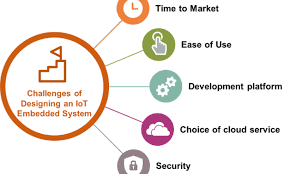Introduction:
In the world of embedded systems, bootloaders play a vital role in initiating the startup process and loading the operating system or firmware onto the device’s memory. One bootloader that has gained significant attention and popularity in recent years is RedBoot. RedBoot is an open-source bootloader that offers an array of features, making it a preferred choice for developers and manufacturers alike. In this article, we will delve into the intricacies of RedBoot and explore its capabilities, advantages, and real-world applications.
What is RedBoot?
RedBoot is a robust open-source bootloader designed for embedded systems. Developed by the eCosCentric Limited, RedBoot provides a flexible and customizable solution for bootstrapping and managing the boot process. It offers a lightweight and efficient design, making it ideal for resource-constrained devices.
Features and Capabilities:
RedBoot boasts an impressive set of features that make it stand out among other bootloaders. Some of its notable capabilities include:
Network booting:
RedBoot supports booting over Ethernet, enabling remote firmware updates and network-based debugging.
Flash memory management:
RedBoot provides mechanisms for handling flash memory, allowing efficient firmware updates and storage management.
Remote debugging:
With built-in debugging features, RedBoot allows developers to interact with the bootloader remotely, enabling real-time debugging and diagnostics.
Command-line interface:
RedBoot offers a user-friendly command-line interface, empowering developers to execute various commands for configuring, updating, and managing the bootloader.
Advantages of RedBoot:
RedBoot offers several advantages that make it a preferred choice for developers and manufacturers:
- Flexibility and customization: RedBoot’s modular design allows developers to customize the bootloader according to their specific requirements, optimizing performance and resource utilization.
- Network capabilities: The ability to boot over the network simplifies the firmware update process, eliminating the need for physical intervention.
- Remote debugging and diagnostics: RedBoot’s remote debugging capabilities enhance development productivity by enabling real-time troubleshooting and monitoring of embedded systems.
- Open-source community: Being an open-source project, RedBoot benefits from an active community that contributes to its development, ensuring continuous improvement and support.
Real-World Applications:
RedBoot finds application in various industries and sectors, including:
- Internet of Things (IoT): RedBoot’s network booting and remote management capabilities make it an excellent choice for IoT devices, facilitating over-the-air updates and remote monitoring.
- Automotive: RedBoot’s reliability and customization options make it suitable for automotive applications, ensuring efficient booting and firmware management in vehicles.
- Industrial automation: RedBoot can be deployed in industrial automation systems, enabling remote debugging, firmware updates, and secure booting.
- Networking equipment: RedBoot’s network booting and flash memory management features make it an ideal bootloader for networking devices, ensuring seamless updates and efficient operation.
Conclusion:
RedBoot stands as a powerful and versatile bootloader for embedded systems, offering a range of features that streamline the booting process and enhance system management. Its flexibility, customization options, and network capabilities make it a valuable asset for developers and manufacturers across various industries. With its active open-source community and continuous improvement, RedBoot is poised to remain at the forefront of bootloader technology, empowering the future of embedded systems.

